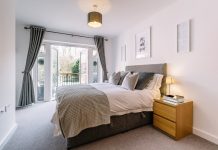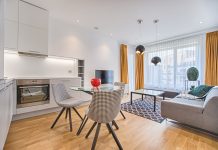Creating a beautiful and practical home requires balancing style and function. While aesthetics are important, a space must also work seamlessly for your daily life. Interior design that harmonizes these elements ensures your home is both inviting and functional. Here are expert tips to help you achieve this perfect balance.
Prioritize Your Lifestyle Needs
The foundation of functional design starts with understanding how you use your space. Consider the activities that take place in each room and prioritize furniture and layouts that support them. For instance, in a living room where you entertain guests, opt for ample seating and versatile pieces like an ottoman that doubles as a coffee table.
Choose Multi-Functional Furniture
Multi-functional furniture is a cornerstone of blending style and utility. Items like sofa beds, extendable dining tables, and storage ottomans save space while offering practical solutions. Invest in pieces that are not only visually appealing but also serve multiple purposes to maximize efficiency.
Incorporate Smart Storage Solutions
Clutter can disrupt even the most stylish space. Use smart storage solutions to keep your home organized. Built-in shelving, under-bed storage, and decorative baskets help maintain a clean and streamlined look while keeping essentials within reach. Opt for storage pieces that complement your design, like a sleek console table with hidden compartments.
Layer Textures for Comfort
Functionality doesn’t mean sacrificing coziness. Layering textures, such as plush rugs, soft throws, and velvet cushions, adds warmth and style to a room. Use materials that are durable and easy to maintain, especially in high-traffic areas, so your space remains both inviting and practical.
Use Lighting to Enhance Ambiance
Lighting is essential for creating both mood and functionality. Layer your lighting with overhead fixtures, task lighting, and ambient options like floor lamps or wall sconces. Dimmer switches allow you to adjust the intensity, making the space adaptable for various activities.
Stick to a Cohesive Color Palette
A cohesive color palette ties a room together and enhances functionality by creating a visually calming atmosphere. Neutral tones with pops of color in accessories or accent walls can make a space feel harmonious. Choose colors that work well for the room’s purpose, like soft blues for relaxation in a bedroom or energizing yellows in a workspace.






